Five Steps to Exponential Sermon Messages—Including Holy Week!
Photo by Dstudio Bcn on Unsplash
Preaching multiple sermons in a short period (like Holy Week) is tough.
We have to read multiple texts, research multiple texts, ponder multiple texts, pray over those texts, discern the messages, and then craft the sermons! Ack!
It’s stressful and time consuming!
But it doesn’t have to be that hard.
It’s really just a matter of mixing and matching!
Here are five simple steps to create an almost endless number of sermons messages, perfect for Holy Week or any sermon series.
Step 1: Choose three themes
Read the Scripture texts for themes.
What is God/Jesus/Spirit doing in these texts?
What are God’s actions?
For example, God might be forgiving, loving, or healing.
Or who do we understand God to be on the basis of these texts?
For instance, God might be merciful, kind, or compassionate.
Any of these ideas might be themes that stretch across the all the texts, if not explicitly then implicitly .
Even if God’s compassion isn’t described per se, is God ever not compassionate?
What do we learn about who God is on the basis of these texts?
Make a list while you read. Then choose the three you find the most compelling.
For example, for this year’s Holy Week sermons I chose forgiveness, humility, and love.
Step 2: Choose three characters
As you read, make a list of all the characters. To give an example, I’ll focus on the Maundy Thursday reading of John 13:1-17, 31b-35.
Major characters are characters (often named, but not always) who have a major influence on the story’s arc, like Jesus, Judas, and Peter.
Minor characters (from a story point of view, not a theological one) are usually named by name but serve a supporting role. On Maundy Thursday for instance, the devil and God are minor characters.
Unnamed characters are often present physically, are important to the action, but don’t cause the action. For example, “the world,” “the disciples,” “one is entirely clean,” “little children.”
Off-stage characters are the ones who had to have had a role in the drama but are not seen. For instance, Jesus poured water out of a pitcher when he was washing the disciples’ feet. Probably the pitcher needed to be refilled or switched out. Who did that? Who cooked and served the Last Supper?
Once you’ve listed all the characters, select three whose eyes you feel drawn to explore the scene through.
I selected Jesus, Judas, and Jesus’s Followers.
Step 3: List three contexts of time
List the three contexts of time.
Then. The biblical era (loosely defined). Here we’re concerned with the biblical references (as when Jesus quotes Torah), the author and audience of that book, and the socio-cultural norms.
Now. How are the themes and characters relevant to today?
Future. If God had God’s way with this theme, what future would God create for us?
Step 4: Relate Equivalencies
Now you’ll take the theme, the character, and the context to imagine equivalencies. These will provide you with insights, analogies and metaphors, and the jumping-off spot to sermon illustrations.
Here’s how it works.
Equivalency #1
Theme: Forgiveness
Character: Jesus
Context: Then
Equivalency: Jesus forgiving Judas before Judas betrayed him would be the equivalent of King David asking Uriah for forgiveness before David sent Uriah to the front lines—and Uriah granting it.
Equivalency #2
Theme: Humility
Character: Judas
Context: Now
Equivalency: Judas’s contempt for Jesus’s humility when he knelt to wash the feet of the disciples is the equivalent of people’s contempt when those in power are willing to humble themselves by wearing a mask, living modestly, compromising, etc..
Step 5: Mix-n-Match
Now you have three themes, three characters, three contexts, and many equivalencies.
By putting any of the themes with any of the characters, contexts, and its corresponding equivalencies you have an exponential number of sermons ready to flesh out.
For instance, here’s one example of using the same theme (forgiveness), the same character (Jesus), but three different contexts, one for each of Maundy Thursday, Good Friday, and Palm Sunday.
Maundy Thursday
Theme: Forgiveness
Character: Jesus
Context: Then
Equivalency: Jesus forgiving Judas is like Uriah forgiving King David before David sends him to the front lines.
Good Friday
Theme: Forgiveness
Character: Jesus
Context: Now
Equivalency: Jesus forgives us even before we are tempted to shame someone for wearing/not wearing a mask.
Palm Sunday
Theme: Forgiveness
Character: Jesus
Context: Future
Equivalency: In the future when we spend as much time and emphasis on forgiveness as Jesus did, we’ll spend as much energy building relationships than proving our position is right.

